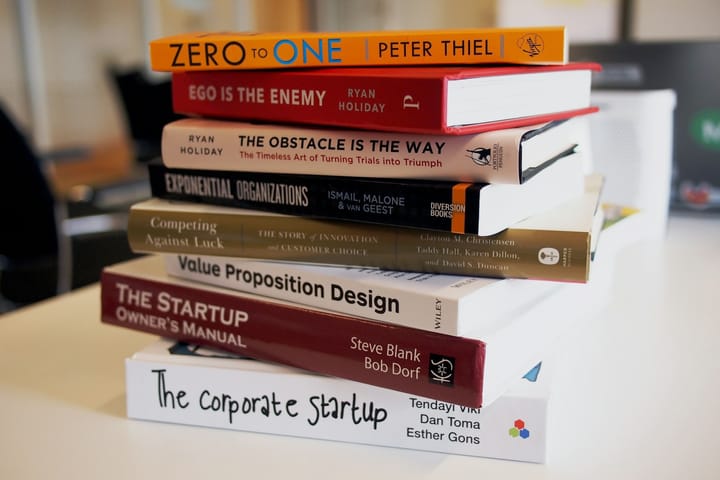How to Stop Procrastinating: A Path to Getting Things Done
Struggling with chronic delay? Learn how to stop procrastinating using science-backed strategies, storytelling insights, and sustainable habits that actually work.

Not long ago, I found myself staring at a blank screen for over an hour. The cursor blinked like a metronome of guilt. I had a looming deadline, a detailed outline, and even a pot of strong coffee beside me—but I just couldn’t begin. Like many others, I’d fallen into the silent grip of procrastination. It wasn't a matter of laziness or a lack of discipline. It was deeper, more insidious. Learning how to stop procrastinating became a turning point—not just in my productivity, but in how I approached life.
Let’s walk through that journey together.
Why Do We Procrastinate?
Understanding why we procrastinate is the first step to overcoming it. Contrary to popular belief, procrastination isn't a time management issue. It's an emotional regulation problem. We delay tasks not because we don’t have enough hours in the day, but because we’re avoiding the discomfort they bring.
Sometimes, it's fear—fear of failure, fear of judgment, or even fear of success. Other times, it's perfectionism that paralyzes us, demanding we do things flawlessly or not at all. And often, it's simply overwhelm. When a task seems too big or too complicated, our brain seeks refuge in easier, more pleasurable activities.
You might find yourself scrolling through social media or reorganizing your kitchen instead of replying to that one important email. The short-term relief feels good, but the long-term cost quietly builds up.
The Cycle of Delay
Here’s how it often plays out: you put something off, feel guilty about it, then get anxious. That anxiety saps your motivation further. Days pass. The task grows heavier, the guilt sharper. And just when the pressure reaches a tipping point, you scramble to finish it at the last minute. Even if you succeed, you reinforce a dangerous pattern: “I work best under pressure.”
But do you really? Or have you just grown comfortable surviving under stress?
To learn how to stop procrastinating, we need to rewrite that script—one small step at a time.
Step 1: Start with the Smallest Possible Action
When the weight of a task feels unbearable, the solution is not to scale the mountain in one leap. It's to lace up your shoes. Starting with the smallest, least intimidating action can break inertia and build momentum.
If you need to write a report, don’t aim to complete the whole thing—just open the document and type the title. If your house is a mess, don’t clean it all—just pick up three things off the floor.
This technique, often called the "two-minute rule," teaches your brain that starting isn't so scary. And more often than not, starting is all you need to keep going.
Step 2: Break It Down Like a Puzzle
Big tasks are vague. "Plan my presentation" could mean anything from doing research to designing slides to rehearsing aloud. That vagueness breeds anxiety.
Instead, divide the task into bite-sized pieces. “Find three sources,” “Write the intro slide,” “Time the speech.” Each mini-task feels more achievable and gives your brain a hit of dopamine when you complete it.
Think of it like a puzzle. You don’t build the picture by dumping the box on the table—you sort the edges, find corners, and piece it together step by step.
Step 3: Timebox and Tempt Yourself
One trick that’s changed the game for many procrastinators is the Pomodoro Technique. Set a timer for 25 minutes, work without distractions, then take a 5-minute break. It’s structured, but forgiving. It creates urgency without burnout.
To make it more enticing, pair a hard task with something pleasant. Listen to your favorite playlist while answering emails. Light a candle before diving into spreadsheets. These sensory anchors train your brain to associate the work with comfort instead of dread.
Step 4: Remove Friction, Not Just Distractions
We often talk about cutting out distractions—putting your phone on airplane mode, using site blockers, or logging out of Netflix. That’s essential. But equally important is removing friction—the invisible barriers that make starting hard.
If you work better in a tidy space, take two minutes to clean your desk. If you keep forgetting to update your planner, keep it next to your toothbrush. Make the productive choice the easy one, not the heroic one.
Step 5: Reframe the Narrative
Your inner dialogue matters more than you think. If you constantly tell yourself, “I’m just a procrastinator,” your brain believes it. That identity becomes a self-fulfilling prophecy.
Try shifting the narrative. Instead of “I have to finish this,” say “I get to move this forward.” Instead of “I’m bad with deadlines,” say “I’m learning to pace myself better.”
Language shapes perception. And perception shapes reality.
Step 6: Practice Self-Compassion, Not Self-Criticism
Here’s a truth many high-achievers struggle to accept: shame doesn’t make you more productive. It just makes you feel worse.
If you missed a deadline or wasted an afternoon, meet yourself with curiosity instead of criticism. Ask, “What led to this?” instead of “What’s wrong with me?”
Learning how to stop procrastinating isn’t about perfection—it’s about progress. And progress thrives in environments of understanding, not punishment.
Step 7: Make Accountability Gentle and Effective
Telling someone your goals, especially someone who won’t judge you, can drastically increase follow-through. Not because they’ll scold you if you fail, but because verbalizing your intentions makes them real.
Find an accountability buddy, set up a weekly check-in, or even write a short update to yourself at the end of each day. The act of reflection helps track your growth—and growth fuels momentum.
Step 8: Celebrate Tiny Wins
Your brain loves rewards. And yet, most of us only celebrate after massive achievements. No wonder motivation runs dry.
Did you open the email draft? Celebrate. Did you read three pages? Pat yourself on the back. Did you resist the urge to scroll? That’s a win.
These micro-celebrations reinforce the behavior you want to repeat. They also help you enjoy the process, not just the outcome.
The Role of Values in Beating Procrastination
One powerful motivator often overlooked is personal values. Why does this task matter to you, beyond the obligation?
Maybe finishing the project means earning trust. Maybe cleaning your space gives you peace. Maybe making that phone call could mend a relationship.
When tasks align with your values, they become meaningful, not just mandatory. And meaning drives action.
Long-Term Habits That Prevent the Procrastination Relapse
Procrastination isn’t something you “cure” once and for all. It’s a pattern you gradually outgrow. And like any lasting change, it depends on habits.
Create routines that support clarity and energy. Build buffers into your calendar. Leave white space for rest. Review your progress weekly. Journal your wins and challenges. And, most importantly, stay flexible. Life shifts. So will your strategies.
Final Thoughts: The Myth of Motivation
Here’s the most liberating truth I’ve learned: you don’t need to feel motivated to act. You just need to act. Action breeds motivation, not the other way around.
So next time you find yourself paralyzed by a task, don’t wait to “feel ready.” Just take one step. Open the file. Grab the pen. Send the text. That first move—however small—is the moment everything changes.
Learning how to stop procrastinating isn’t about turning into a productivity machine. It’s about reclaiming your time, your focus, and your peace of mind. It’s about choosing to show up for the life you want, one decision at a time. And it starts right now.



Comments ()